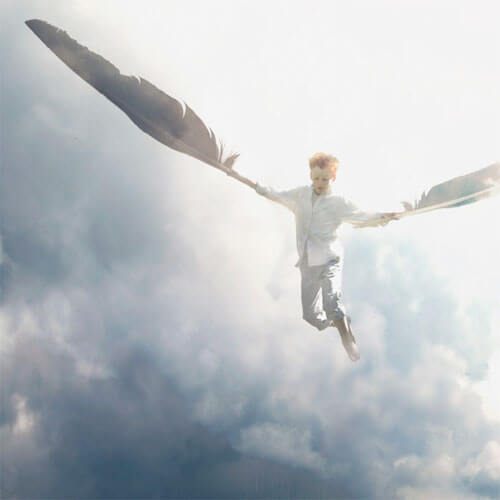Zev Hoover, from Natick, Massachusetts, goes by the Flickr username Fiddle Oak, a play on 'little folk', which adequately describes the incredible images that make up his 'miniature world'. In his fantastical photos in which people are digitally shrunken, acorns make excellent seats, Popsicle sticks are the ideal size for building rafts, and paper airplanes are viable modes of transport. Zev told Today.com that while he takes the photos with his own camera, his older sister Nell, 18, was the brains behind the original tiny people concept. "She is sort of my partner in crime," he said, adding that she is "more of a writer". While Nell may have come up with the idea, Zev executes the images beautifully, and his unique work has attracted the attention of professional photographers and designers.
The 14-year-old, who also writes a blog, explained the complicated process of how he creates his dreamlike images, many of which feature him as the main subject. The process involves capturing the background image first, shrinking photos of people in similar lighting, manipulating the images in Photoshop and editing the color scheme so that it all matches. 'It takes a long time,' he said of the resulting images, which are so otherworldly that they almost look like drawings. One image shows a boy constructing a house of playing cards, his body the same size as the cards. In another image, a 'miniature' boy and girl sit upon a raft made of Popsicle sticks, the sail of which is a single leaf. Many of Zev's images explore nature, including one in which a boy perches inside the shell of an acorn.
Another nature-themed photo, which plays with and distorts size ratio, shows a miniscule-looking boy sitting on the edge of a rock, a violin in his hand. Photography and design websites have picked up on Zev's work, lauding him for being so talented and creative at such a young age.
Source: www.dailymail.co.uk
